How to clean a fireplace – these expert tips will keep your fireplace looking its best
Discover how to clean a fireplace the right way, to restore its luster and make it the heart of your living room year round
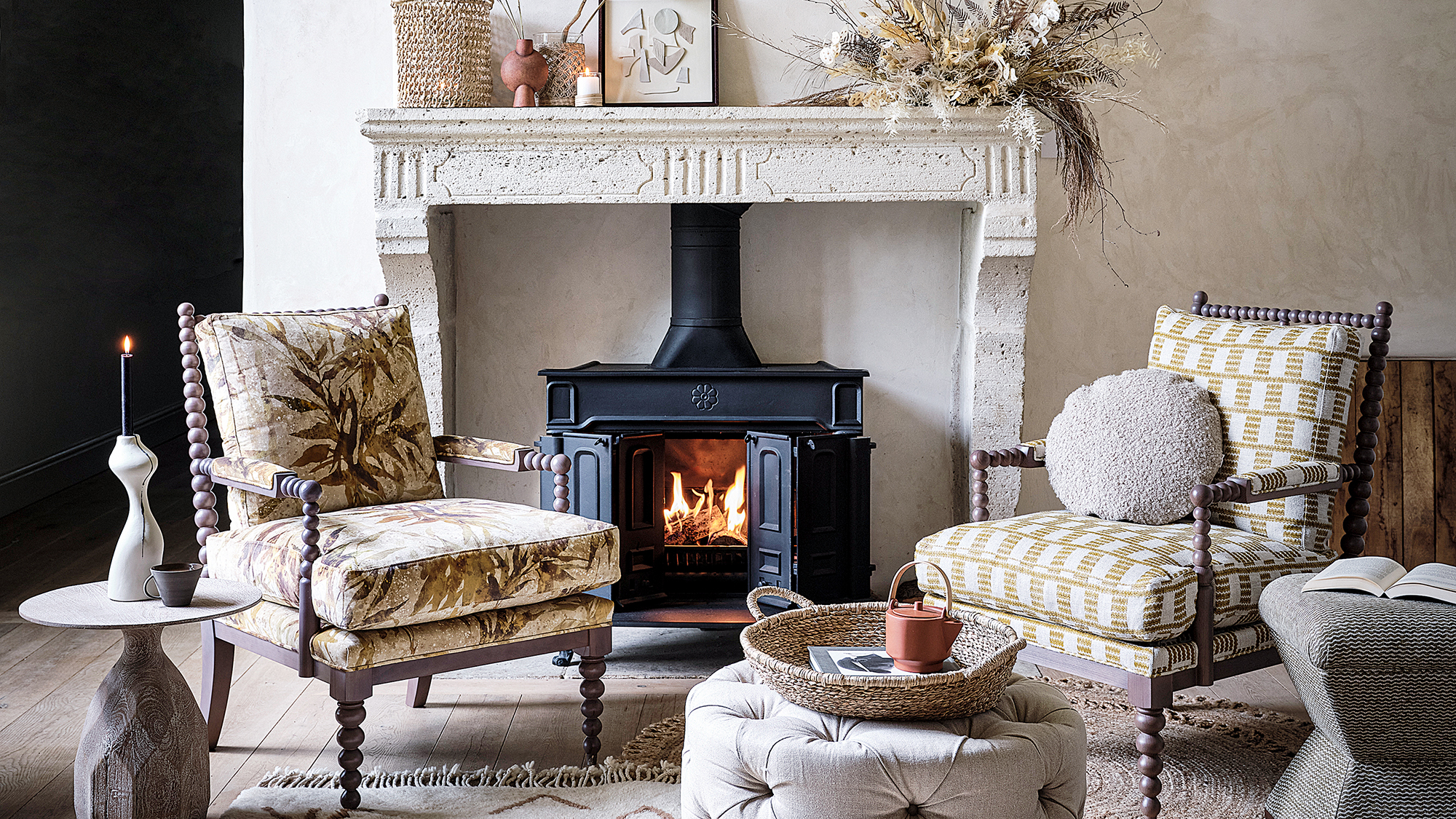

It’s vital to know how to clean a fireplace properly if you want to keep this focal point feature looking its best for years to come.
In the colder months, our fireplaces get a lot of use but, if you have not cleaned yours for a while, expert cleaning tips may be required to return it to its former glory.
‘Fireplaces need care and attention if they are to look good and work efficiently – whether simple cast iron or wildly extravagant marble creations,’ says Roger Hunt, author of Old House Handbook.
Not only do fires and their surrounds accumulate grime whenever you start a fire in a fireplace, but open fires can get particularly dirty from smoke and ash.
With a bit of effort your fireplace can be revived, but if it can't be saved, then consider one of the many beautiful fireplace ideas for a new design.

How to clean a fireplace – before you start
Factor periodic care of a fireplace into your living room cleaning regime. As for how to clean a fireplace, it's important to choose products and methods that are suitable for the material you are working with.
Fireplaces range from brick and stone inglenooks designed to burn large logs, to those with elegant timber and marble surrounds, and highly decorated cast-iron designs, sometimes possessing ornate tiles.
Design expertise in your inbox – from inspiring decorating ideas and beautiful celebrity homes to practical gardening advice and shopping round-ups.
If it’s an original fireplace in an older house, then take extra care. ‘Some period fireplaces are of significant value so, if in doubt about the finish or undertaking repair work, it is worth calling in an expert,’ says Hunt.
‘There are so many traditional fireplace ideas, and not all are what they seem; slate was often carefully painted to represent more expensive marble or ‘grained’ to imitate hardwoods, such as rosewood and mahogany.’
If your fireplace needs more than a light clean, or there is rust or damage present, then consider the options for restoration – competent DIYers can learn how to restore cast iron effectively, but stone and marble fireplaces may require professional expertise.
Remember, safety is key and, whether a fireplace is used regularly or infrequently, problems should be rectified promptly.
‘With any fireplace, it is essential to ensure it is working correctly, so have the chimney swept regularly and fit smoke and carbon monoxide alarms,’ says Hunt.
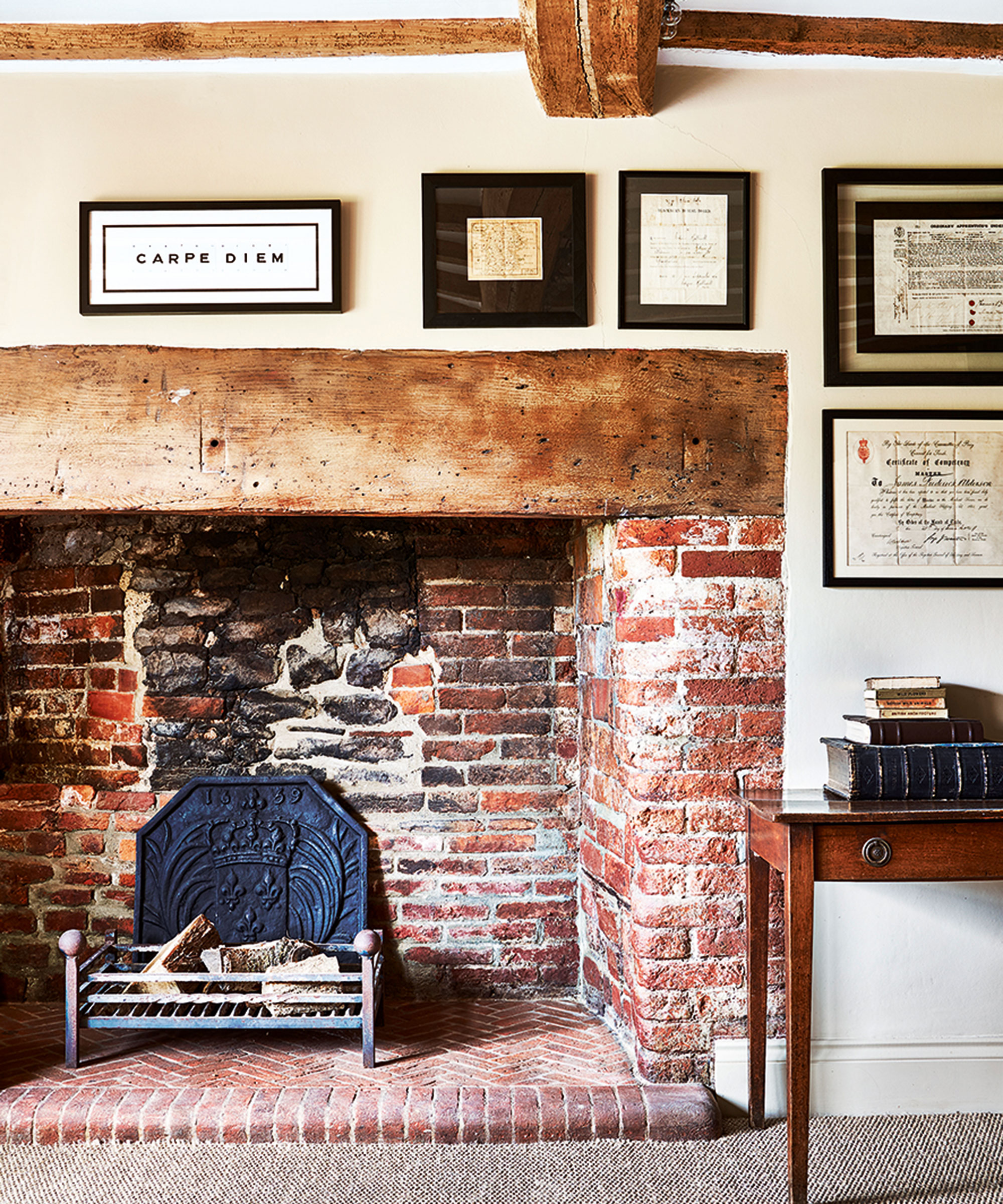
How to clean a brick fireplace
Over time brick fireplaces can become ingrained with dirt and blackened with soot, and removing it can present challenges.
‘Chemical cleaning can work but may cause staining, and care needs to be taken not to saturate the brickwork when washing off,’ says Hunt.
'Meanwhile, water-based methods may result in efflorescence.' This is when white deposits come to the surface of the brick.
Many homeowners do manage to successfully clean their brick fireplaces simply using water containing dish soap, and a scrubbing brush.
If that doesn’t work, then you could attempt to use a stronger cleaning solution such as ammonia, borax or even vinegar.
If efflorescence is present once the bricks are dry, you should be able to remove it with a stiff brush.
Bear in mind that any harsh cleaning methods could diminish the character of an older fireplace, so proceed with caution, and always trial your chosen method on a small area before applying it to the rest, giving it chance to fully dry in between.
Consult an expert when cleaning a characterful brick fireplace in a period home.
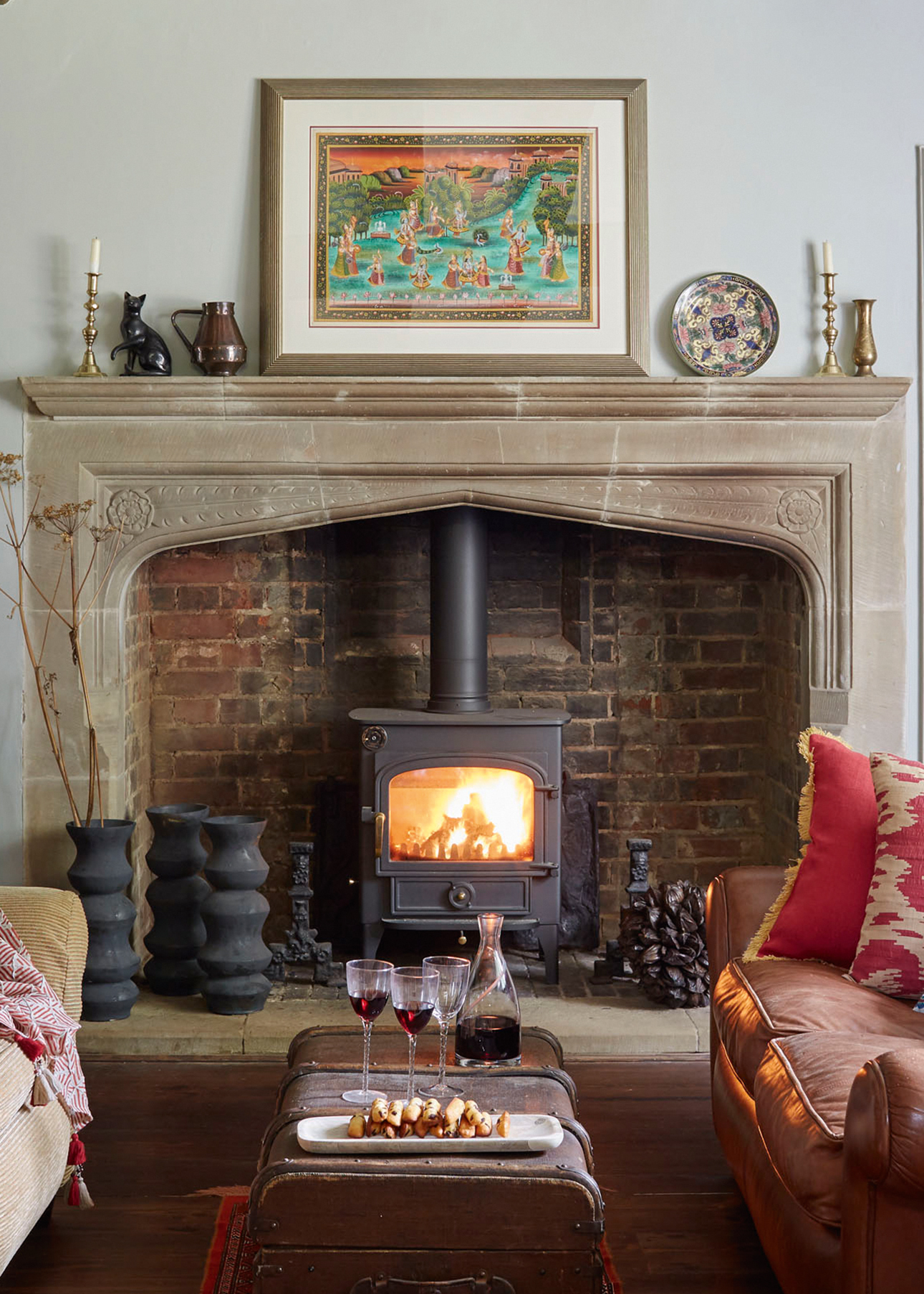
How to clean a stone fireplace
‘Easily damaged, stone and marble may discolor due to soot deposits, suffer staining from red wine or rust and can crack,’ says Hunt.
For general cleaning, stone fireplaces can be revived with warm water containing a small amount of bleach, but be sure to protect surrounding areas.
‘The surfaces of stone and marble are easily damaged by household cleaners if they contain any acid, so make sure you invest in specialist supplies. Always test cleaning products on a small, inconspicuous area first,’ adds Hunt.
However, stains can be difficult to remove from stone fireplaces. ‘In my experience, it is almost impossible to remove smoke stains from a stone fireplace,’ says Chris Wright, of fireplace restoration specialist PJ Wright & Sons.
‘A bleach poultice can be applied to some stains but make sure it does not have a lime inhibitor. I find that oil cannot be removed, nor can rust.’
Therefore, for difficult stains or valuable fireplaces, it’s best to consult a professional to get the best result possible for your fireplace.
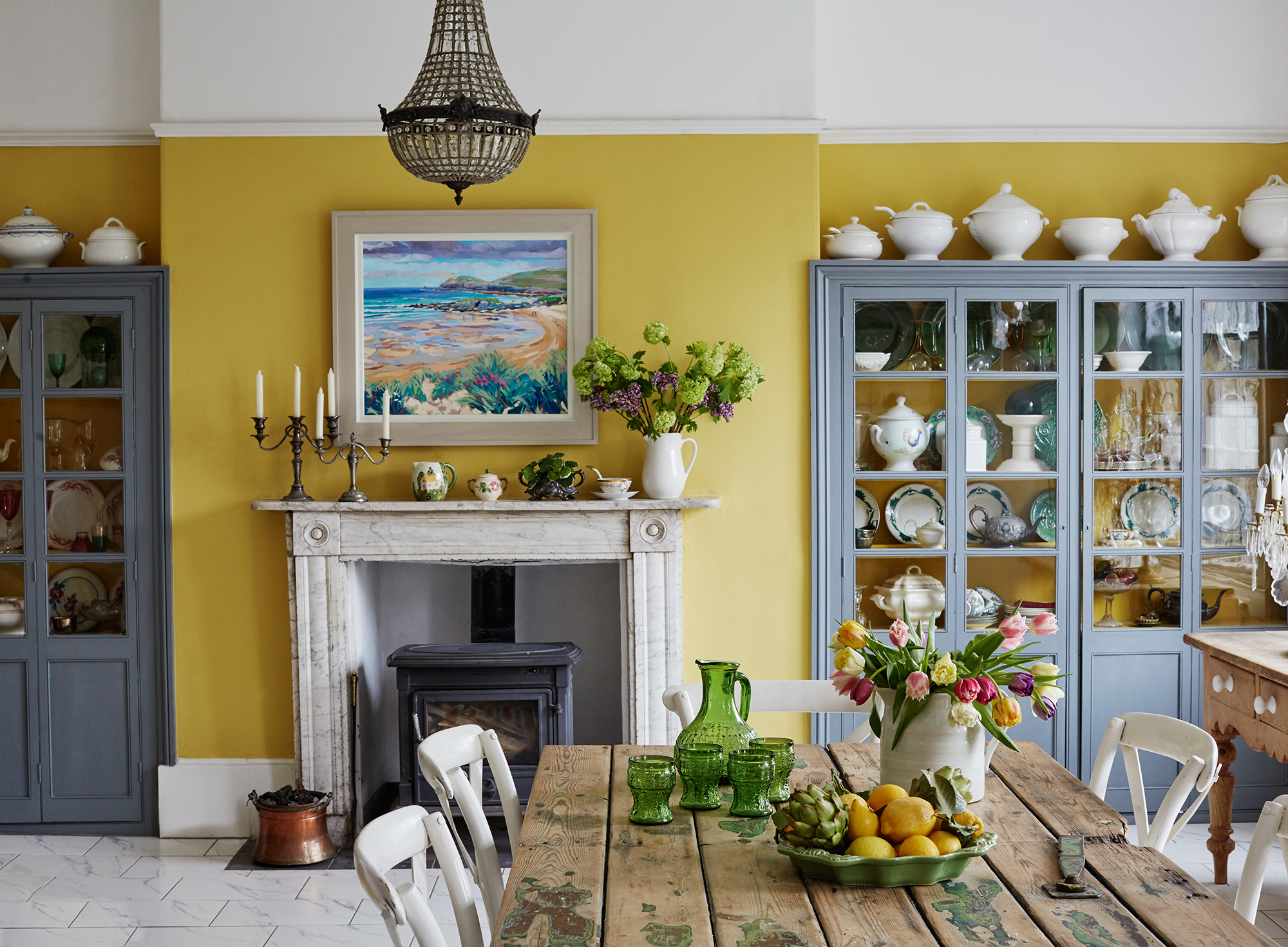
How to clean a marble fireplace
‘To clean a marble fireplace, a duster and a little bit of marble polish won’t do any harm,’ says Nick Durrant of Nostalgia Antique Fireplaces and Interiors.
Michael Brown of The Antique Fireplace Restoration Company says a cream cleanser or a bleach-based product should be safe to use on marble, but advises that acidic products will start dissolving it.
‘As long as you stay on the alkaline spectrum you should be OK, but there is no middle step – the next step is to repolish, which involves sanding the marble and is a specialist job.’
For more severe staining, Wright recommends proceeding with caution. ‘Marble should be treated with great care and is often best left to specialists,' he says.
'A marble fire surround can sometimes be cleaned with a detergent and then waxed and buffed, but test on a small area first.’

How to clean a cast iron fireplace
When cleaning a cast iron fireplace, it’s best not to get it too wet, as cast iron can rust very quickly.
‘Dust, grease and grime is best removed with a rag soaked in white spirit rather than water,’ says Hunt. However, if you do get it wet, dry it thoroughly before applying your chosen finish.
‘You can polish a cast iron fireplace to give it a very bright silver finish or use traditional black grate polish, which is a bit like using boot polish; you put it on with one brush, let it dry and take it off with another,’ adds Durrant.
If your fireplace is rusty, then it’s possible to remove it. ‘As long as it is not painted, rust can be removed from the fireplace with a wire brush and a coat of grate polish applied. Once dry, this is then buffed,’ says Wright.

How to clean fireplace tiles
‘Although fireplace tiles are thicker and more robust than wall tiles, they start to look dirty and will craze over time,’ says Hunt.
Restoration expert Helaine Clare recommends good old-fashioned warm soapy water to remove day-to-day dirt. ‘Use a bristle scrubbing brush or nylon scourer,’ she says.
‘An old toothbrush is useful for cleaning the grouting. Missing grouting can be replaced too, but do check the new product is suitable for surfaces exposed to high temperatures.'
If your fireplace tiles are very dirty, then Tim Swindlehurst, of Twentieth Century Fireplaces, recommends cleaning them with a thick, gel-type bleach mixed with hot water. ‘Using a sponge, squeeze it on the tiles until you get thick suds. Leave it half an hour and then clean it off; the bleach will pull out the dirt, and it will look amazing.’
How to clean fireplace glass
It’s important to clean fireplace glass to allow clear visibility of the flames. For a homemade solution, just as for cleaning windows, diluted vinegar works well.
You can even make your own cleaner from fireplace ash – simply mix some of the ash with a little water to make a paste, then use a paper towel to remove as much grime and residue as possible. This method is surprisingly effective.
For really burnt-on stains, avoid the temptation to use a blade to scrape them off, as you risk scratching the glass. There are a number of products specifically designed for cleaning fireplace glass, available through Amazon, which require the use of a cloth or sponge and will work on more deeply ingrained marks.
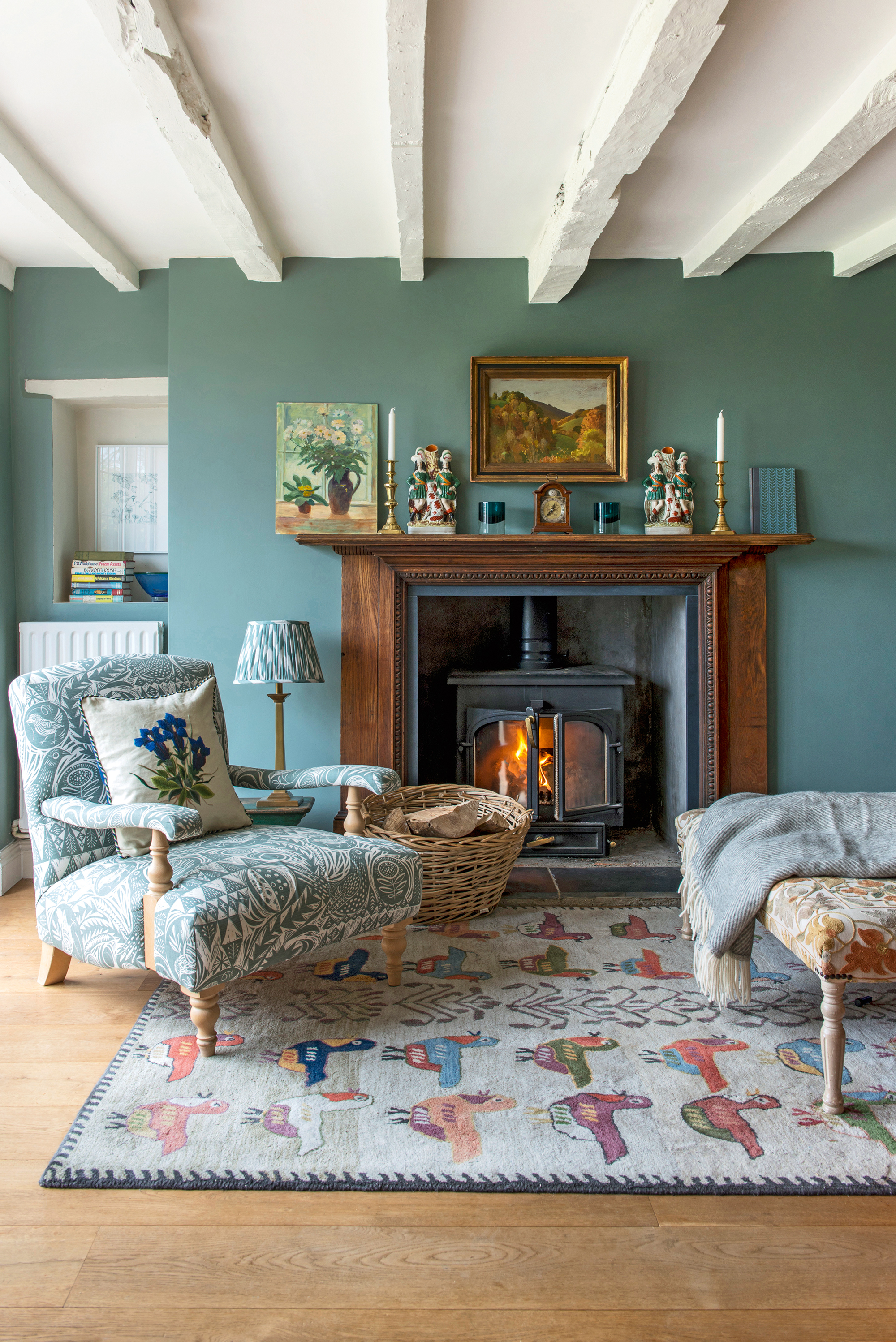
How to clean a wood fireplace surround
‘Look after wood fireplace surrounds like other joinery: buffing up regularly with a lint-free cloth, polishing occasionally and, if cleaning, using a well-diluted detergent solution and a cloth without soaking the timber,’ says Hunt.
‘To nourish the wood and protect it from the drying effect of heat, rub in a good quality beeswax polish,’ adds Claire. ‘Leave to dry and buff up with a soft cotton cloth. To avoid a smeary finish always apply polish sparingly – too much will discolor the wood.’
How do you clean soot off the inside of a fireplace?
You can clean soot off the inside of your fireplace by using the recommended method for cleaning your specific fireplace material.
You should be able to clean soot off brickwork using soapy water, household cleaners such as vinegar, borox or ammonia, or you could even make a paste of baking soda and water.
Soot and smoke stains can be very difficult to remove from marble and stone, so it's best to consult an expert.
Do fireplaces need to be cleaned?
Fireplaces definitely need to be cleaned in order to minimize build-up of grime, which if left for too long can become ingrained and very difficult to remove.
Ideally clean your fireplace thoroughly at the end of the heating season in spring, and give it a refresh the following fall, before you light it for the first time.
You might need to clean walls, too, if the fire has caused marks, so check these in spring, too.

Melanie has worked in homes and gardens media for two decades. Having previously served as Editor on Period Living magazine, and worked on Homes & Gardens, Gardening Etc, Real Homes, and Homebuilding & Renovating, she is now focusing on her passion for gardening as a Senior Editor at Gardening Know How. As a keen home grower, Melanie has experimented with pretty much every type of vegetable at some point – with mixed results. Often it is the simplest things that elude you, which may explain why she just can't seem to master zucchinis.